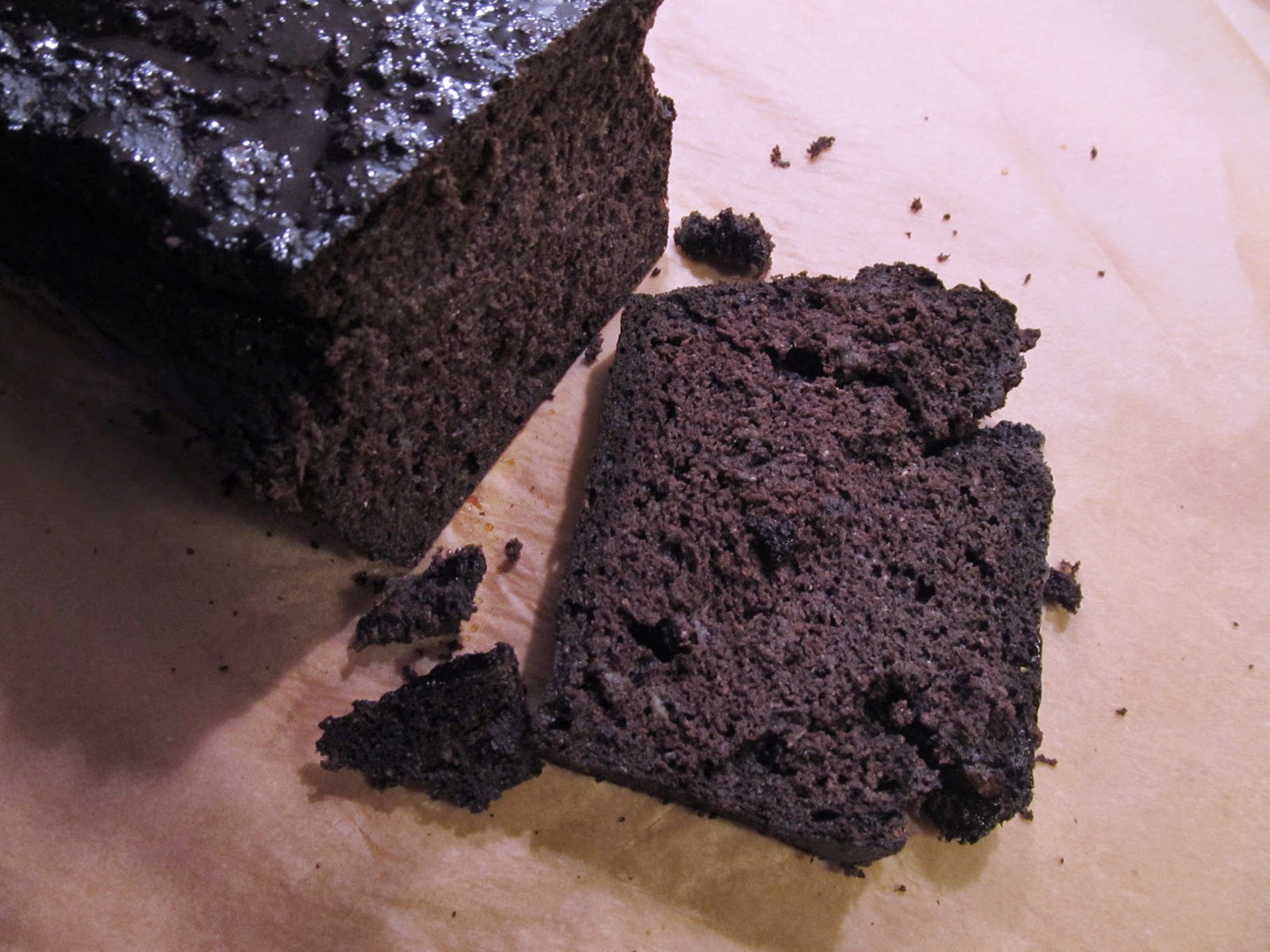"Murteiden ja erilaisten kansanomaisten nimitysten säilyttäminen on arvokasta työtä, jota tulisi harjoittaa arjessa mahdollisimman paljon.
Suomalaisilla
ruoilla on mielestäni valtavan hauskoja nimiä. Mitä perinteikkäämmästä herkusta
on kyse, sitä vinkeämpi on myös nimi. Tällaisia ihastukseni kohteita ovat
esimerkiksi apposet, rättänä, kisko, mutti, suutarin lohi, sipatti, korvalaakit
ja sonnin töyssy. Ruokien nimet kertovat paljon suomalaisesta huumorintajusta:
ne ovat usein hieman sarkastisia ja nenäkkäitä, joskus jopa kaksimielisiä.
Välillä olen päättänyt valmistaa jotain ruokaa vain siksi, että sen
mielenkiintoinen nimi on kiinnittänyt huomioni. Yhtenä esimerkkinä toimii
seitsennahkapuuro, johon törmäsin kirjassa Keittotaito koteja ja kouluja varten
(Koskimies, H. & Somersalo, E. 1950. Porvoo: WSOY). Kanelinen puuro sopii
hyvin talviseksi herkuksi.
Seitsennahkapuuro:
4 dl vettä
3 dl puuroriisiä
1 l maitoa
1 tl suolaa
3 rkl sokeria
2 rkl kanelia
voita
Keitä puuroriisiä
vedessä niin kauan, että vesi on täysin imeytynyt riisiin. Lisää sitten maito
vähitellen ja koko ajan sekoittaen. Anna maidon kiehahtaa kunnolla jatkuvasti
sekoittaen, ja poista kattila sitten levyltä. Anna hautua kannen alla noin 40
minuuttia, kunnes puuro on pehmennyt ja jämäköitynyt. Mausta suolalla. Voitele
uunivuoka voilla. Aseta vuoan pohjalle ohuehko kerros puuroa ja ripottele
pinnalle kanelia sekä sokeria. Leikkaa päälle pieniä voinokareita. Kasaa puuro
vuokaan näin kerroksittain. Ripottele päällimmäiseksi vielä kanelia ja sokeria.
Kypsennä puuroa 200-asteisessa uunissa noin 30 min.
Suomen kieli
perustuu vanhaltaan uudissanoihin, jotka on johdettu suomenkielisistä
sanavartaloista. Jo aikoinaan kielessämme on jonkin verran myös esiintynyt
muihin kieliin pohjautuvia lainasanoja, mutta ne ovat yleistyneet enemmän
1900-luvulla ja jatkuvasti kiihtyvää vauhtia. Kielemme suuri rikkaus ovat
moninaiset murteet, joiden pohjalta lukuisten kompromissien seurauksena on
syntynyt suomen yleiskieli. Valitettavasti murteet vaikuttavat jatkuvaan
tahtiin liudentuvan, jolloin menetämme myös paljon kulttuurihistoriallisesti
arvokasta tietoa ja perinnettä. Murteet eivät aiheuta ainoastaan ääntämyseroja
yleiskielen sanoihin, vaan sisältävät lisäksi täysin omaperäisiä sanoja joita
muilla murrealueilla ei tunneta. Tämä näkyy hyvin myös ruokien ja muiden
yleisten asioiden nimistössä. Esimerkiksi voikukalle löytyy nopealla haulla
ainakin 29 eri nimeä, mm. hökkörä, höyhenheinä, julmu, maitiainen, munkinpää,
siansilmä ja voinunnu. Murteiden ja erilaisten kansanomaisten nimitysten
säilyttäminen onkin mielestäni arvokasta työtä, jota tulisi harjoittaa arjessa
mahdollisimman paljon. Siten muistamme kenties paremmin, mistä tulemme ja
millaista elämää edeltäneet sukupolvemme ovat eläneet.
* *
*
Finnish dishes have the funniest names. The
more traditional it is, the quirkier the name it has been given to. It has been
very difficult for me to try and translate some traditional names into English.
I would love to be able to do so
because it would give you a nice insight to the culture that now cannot be
fully transmitted. There is simply no way to translate words like apposet,
rättänä, kisko, mutti or sipatti. They have their own background that are not
even familiar to myself. Some names are easier though, because they are based
on set phrases: suutarin lohi
(shoemaker’s salmon – which is not salmon but actually Baltic herring),
korvalaakit (slap on the ear, a delicious bun) and sonnin töyssy (bull’s bump,
heavenly oven baked cheese). I think the names show well the Finnish sense of
humour. Often it is somewhat cheeky and sarcastic, sometimes even suggestive.
There are times when I have decided to cook something just because the dish has
such an interesting name. A good example is today’s Seven Skinned Porridge.
Rice porridge with abundant cinnamon fits well to the season.
Seven Skinned Porridge:
4 dl (1 2/3 cups) water
3 dl (1 1/4 cups) porridge rice
1 l (4 1/4 cups) milk
1 tsp. salt
3 tbsp. sugar
2 tbsp. cinnamon
butter
Combine water, salt and rice in a kettle and bring to a boil. Cook until
all the water is absorbed to the rice. Then add the milk and bring to a boil
while stirring. As the milk starts to boil, remove the kettle from heat and let
simmer for about 40 minutes, until the milk is absorbed to the porridge. Season
with salt. In an oven pot, place a thin layer of porridge on the bottom.
Sprinkle some cinnamon and sugar and cut a few pieces of butter on top. Layer
the porridge like this, and add some cinnamon and sugar on the topmost layer, too.
Bake the porridge in 200 C / 390 F for about 30 minutes.
The Finnish language is strongly based on neologism, that is, words that
have Finnish roots. Even in the early times we had some loanwords, but they
have become more common in the 20th century with more and more
accelerating rate. The richness of Finnish are its various dialects that
through many compromises form the base for the standard language.
Unfortunately, little by little we seem to be loosing the dialects which
results in loosing also some culturohistorically valuable information and
traditions. The Finnish dialects have impact on both the pronunciation and
nomenclature. Finnish dialects have several thousands of words that are known
only in their specific areas. Just with a quick search I could find 29
different names for dandelion, for instance. I think that preserving dialect
and folksy words in our lingual culture is an important task that should be
practiced as often as possible. Perhaps it helps us to remember where we come
from and what kind of life the generations before us have lived.



















